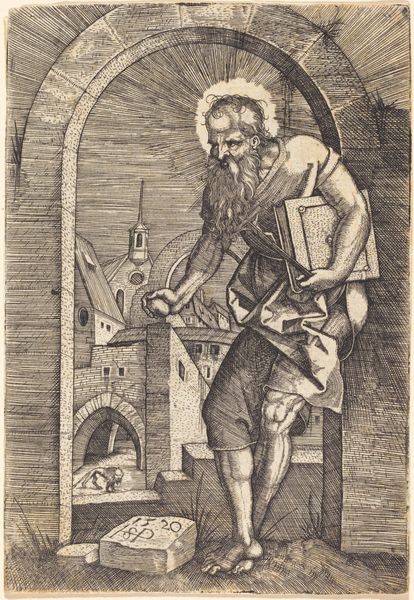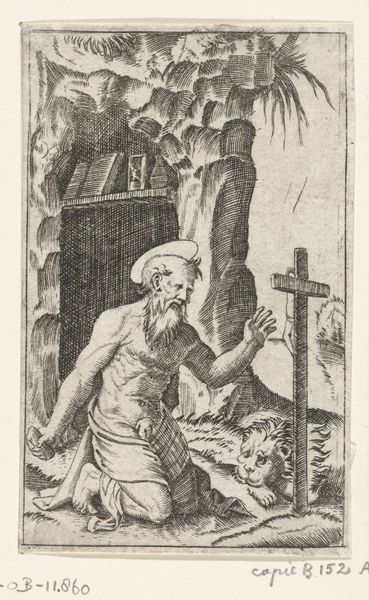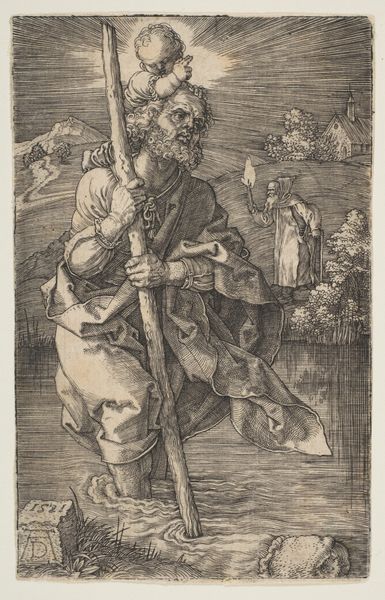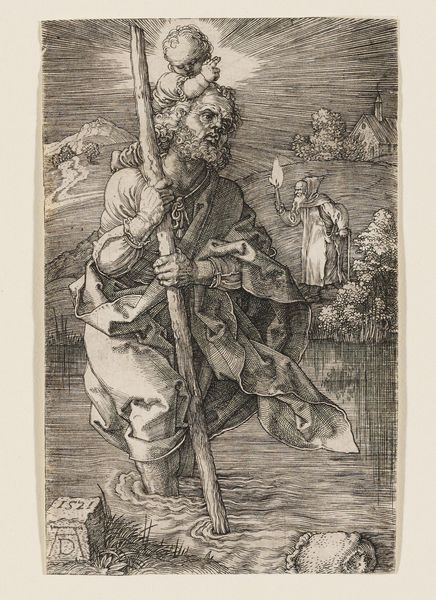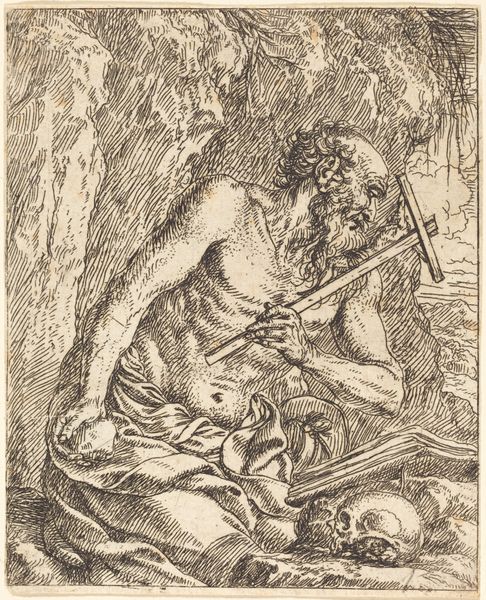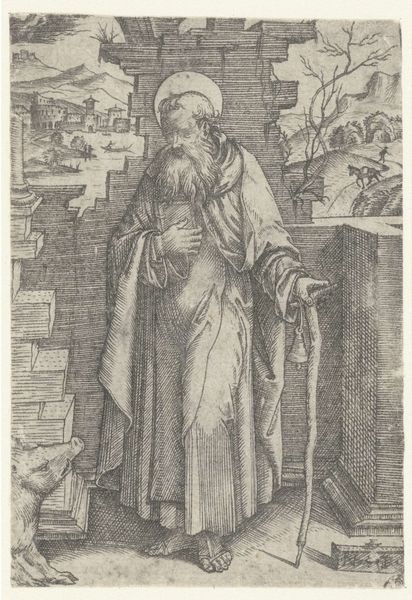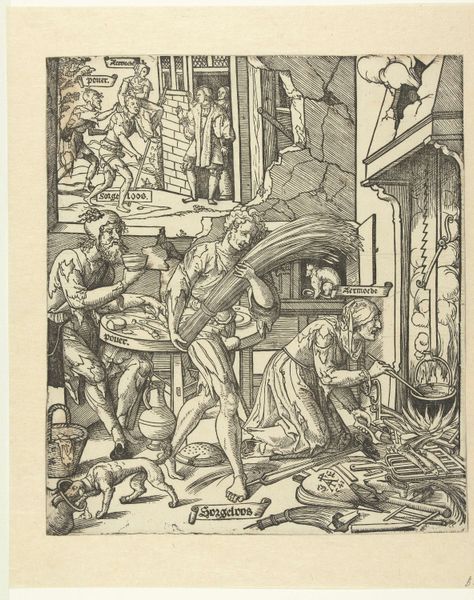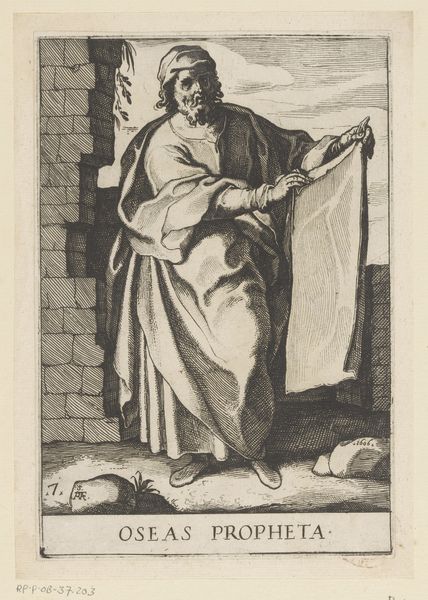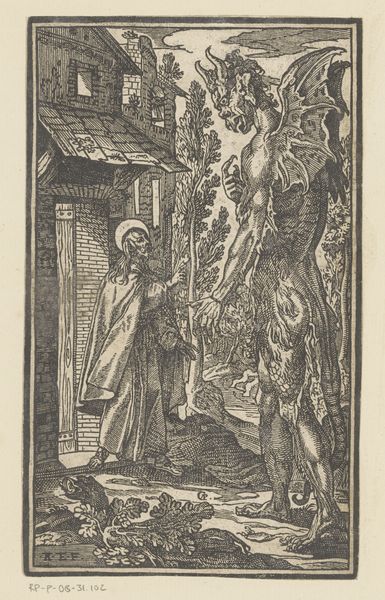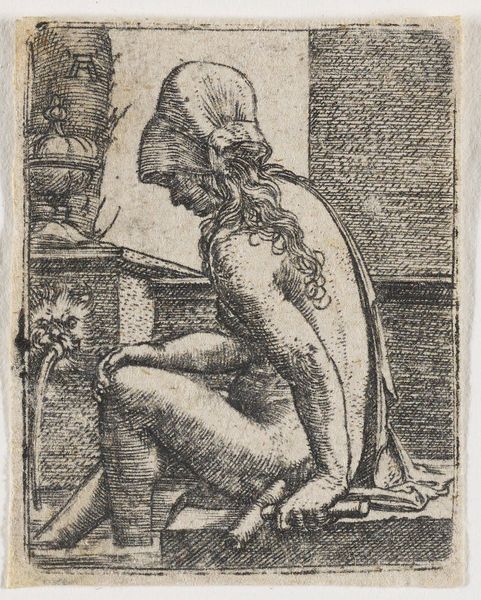
Saint Jerome kneeling before a crucifix, from "Piccoli Santi" (Small Saints) 1495 - 1532
0:00
0:00
drawing, print, engraving
#
drawing
# print
#
figuration
#
history-painting
#
italian-renaissance
#
engraving
Dimensions: 3 1/4 × 1 15/16 in. (8.3 × 4.9 cm)
Copyright: Public Domain
Editor: This engraving, “Saint Jerome Kneeling Before a Crucifix,” comes to us from Marcantonio Raimondi and dates between 1495 and 1532. There’s a real sense of isolation and penitence about the figure and his location. What stories can we unpack from this work? Curator: That feeling of isolation is key, but let’s also consider *who* is being isolated. Here we have Jerome, a figure who translated the Bible into Latin. What does it mean to see him removed, physically and symbolically, from the societal structures that would have relied upon his knowledge? The Renaissance was hardly a monolith, and representations like these are actively wrestling with how we perceive authority, and indeed access to divine wisdom. What does the introduction of the lion figure signify to you? Editor: He seems pretty docile. Like he’s being domesticated, or has become a companion to Jerome in this secluded existence. Curator: Exactly! And isn't the act of taming, of translating nature to fit a human purpose, the very project that Saint Jerome undertook with language? Both he and the lion are, in effect, being reformed. The crucifix becomes this point of… Editor: … Intersectionality? It connects man, animal, and the divine. Wow, I didn't see all of those connections. Thank you. Curator: It's all there, embedded within the print’s historical moment, pushing us to reflect on faith, knowledge, and their accessibility within society. Understanding this intersectionality reveals powerful questions about authority and access. Editor: Definitely. It gives me a richer understanding of the Reformation. Thanks again!
Comments
No comments
Be the first to comment and join the conversation on the ultimate creative platform.
